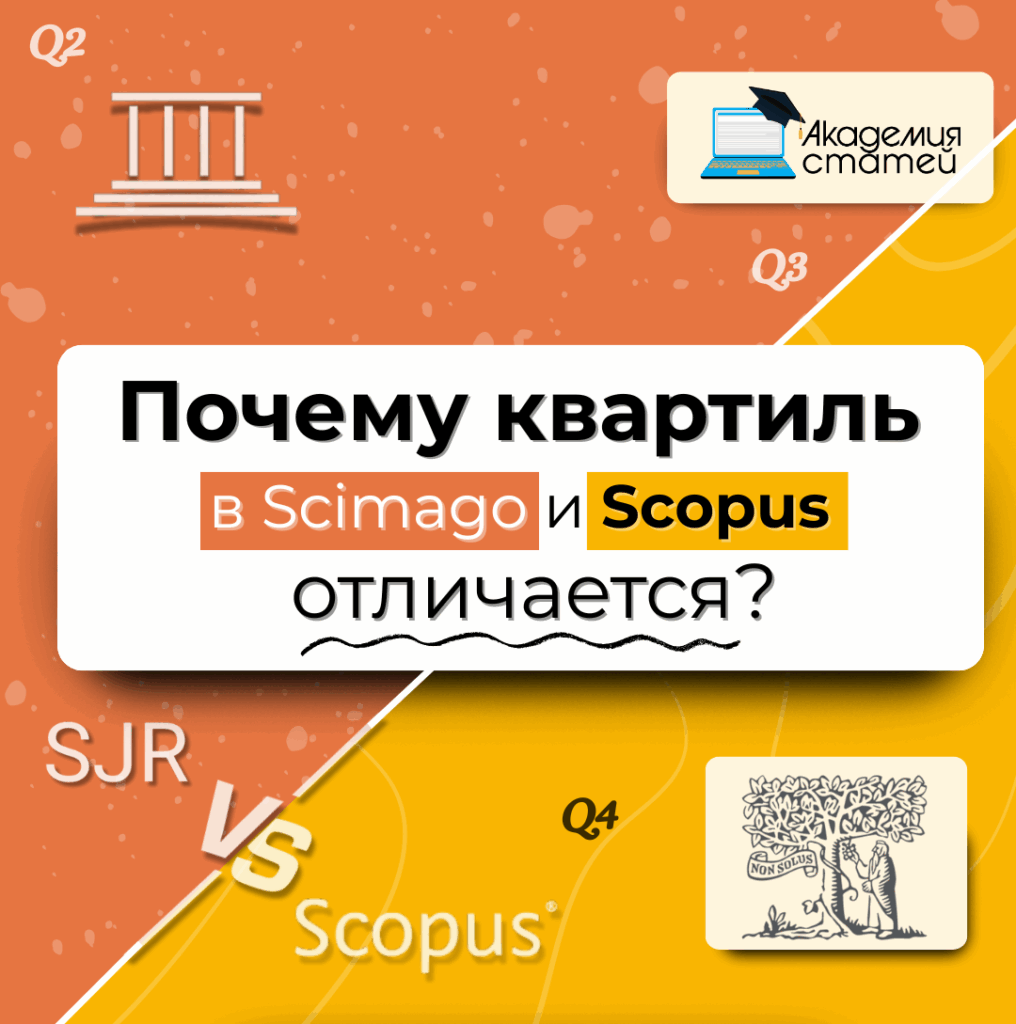A researcher's authority is determined by their publication activity on scientometric resources. The number of publications and the frequency with which they are cited in the research of their peers are taken into account. The citation rate of a publication is an indicator of success for the author involved in science.
One of the popular resources is the international journal Scopus, with a huge database of scientific articles, abstracts, reports on seminars, citations of journals, serial books, conferences, and other peer-reviewed scientific literature in the fields of sociological, natural, and technical sciences.
Young scientists (postgraduates and PhD candidates), striving to reach the global level, try to publish articles in Scopus without first studying the same Scopus journal selection criteria and familiarizing themselves with the editor's content requirements. Not everyone understands how to properly translate material into academic English and find reviewers for their article. After all, writing an abstract in English is a mandatory requirement for publication.
There are two options here: 1) understand all the aspects and write a scientific article yourself, 2) seek help from a consulting company that provides services from preparation and editing to publication of articles in Scopus.
What are the benefits of publishing an article in Scopus?
Submitting a scientific article to a Scopus journal offers a number of opportunities for scientists:
- Academic collaboration with experienced authors and participation in various international studies in a similar field.
- Target audience coverage – the article will be seen by scientists from other countries.
- Additional points for admission to graduate or doctoral studies.
- Increased reputation among colleagues at work and in international scientific circles.
- The prospect of obtaining a higher position at the university and improving financial situation (increased scholarship, allocation of grants for scientific research).
- Formation of a list of mandatory publications when defending a dissertation for a candidate or doctor of science, since articles in the Scopus journal are indexed in the Higher Attestation Commission (HAC) list (Category A).
- Search for new ideas for further differentiation of the research topic.
- Analysis of citations and tracking of interactions with the author's published articles among potential audiences.
Research institutes where Scopus's articles are employed may use the output data in their reporting and comply with the standards established by the Ministry of Education that influence the institution's ranking.
Where to start
First, you need to come up with a publication topic. The article's topic should be relevant, interesting, and well, but not completely, researched. It should also reflect your personal research interests and market conditions in this or a related field.
Next comes the painstaking work of searching and studying articles on the topic. Experienced authors recommend collecting at least a hundred sources, of which approximately half of the English-language journal articles will be retained for further work. Theses, scientific reports, and dissertations can be thrown into the trash.
Advice! Don't use bibliographies in Cyrillic, as such sources will not be citable. Journal editors Scopus, and not even all of them, may allow citing only a couple of works in Cyrillic transliteration.
Next, you need to write the article's "Introduction," outlining the problem within a narrow field. The introduction should be clear and accessible to the reader, grouping scientific facts and their references into separate paragraphs. The final paragraph formulates several hypotheses that follow from the separately grouped paragraphs. We recommend writing 2-4 hypotheses (depending on the article's topic), ensuring that at least one is not confirmed by research; otherwise, the scientific article itself loses its meaning.
From the reference list, select the optimal laboratory analysis method, statistical processing method, and replication method for the article to be reviewed on the Scopus resource. If even one of the methods is inferior to that used in already indexed publications, the article will not be reviewed.
Requirements for structure and design
An article for Scopus is formatted according to the technical requirements of the periodical. The style is scholarly, and the presentation is coherent and logical, without complex phrases or verbal constructions.
Structure of the article:
- Title – the title of the publication indicating the first and last name of the author (or several authors), the address of the work or the research being conducted.
- Abstract – a brief summary of the essence of the publication.
- Key words – indicate the main keys that are mentioned in the material of the scientific work.
- Introduction – an introduction to the article indicating the subject of the research (what was researched and why this particular topic).
- Materials and Methods – the materials and methods used to study this problem (what and how it was done).
- Results – conclusions with descriptions of scientific discoveries identified during the preparation of the work (what was found).
- Discussion – discussion and analysis of the experimental results obtained (what this means for science).
- Acknowledgements – gratitude.
- References – a list of international literature used.
The "Materials and Methods" section should allow for the author's research to be replicated. Gaps in the text are grounds for the journal editor to reject the article without further investigation or explanation. If the author is working with biological material, the research program must be approved by the ethics committee, which should be mentioned in the "Materials and Methods" section.
In order for an editor to accept an article for publication in Scopus journals, the author must comply with a number of technical requirements:
- Articles for publication on Russian-language resources are prepared in Russian and English.
- The publication clearly defines the objectives of the research, its relevance, and significance for the scientific community.
- The optimal volume of an article is within +/- 25 pages (Times New Roman 12 font, margin width – 2 cm, line spacing – 1.5 cm aligned by width).
- The article's originality score must be at least 80% when checked through Antiplagiat (Advego Plagiatus, Etxt or similar).
- Illustrations and pictures are added in a format that allows for further formatting. Visual objects can be black and white or in color. Image titles are provided at the end of the article.
- Tables appear in the article as needed (their number and title are indicated below the table).
- It is recommended to use up to 200 words for the abstract (the objectives of the scientific work, methods and results of the experiments are stated).
- The number of key phrases for one scientific material should be from 5 to 10 - separated by semicolons.
- The bibliography is listed in alphabetical order. References to the bibliography are enclosed in parentheses.
- Metadata is provided for the author and co-author of the article, with the option to include a brief biographical description (up to 50 words in English).
What to look out for
The editorial board of the international Scopus journal has the full right to establish its own style requirements for publications. However, there are also standard citation styles for each scientific field, which are followed worldwide. There are 20 standard styles.
The most popular of them are: APA (American Psychological Association) for social sciences, MLA (Modern Language Association) for humanities, Vancouver Style for physical sciences and medicine.
Review period
The review process for an article can take anywhere from one month to six months, and in some cases, it can extend up to a year. The review period varies across Scopus-listed journals, depending on the journal's authority, publication frequency, review algorithms, publication category, and a number of other factors.
First, the article is reviewed by an editor to ensure it meets formal requirements. If all is well, the article is then sent to the editor-in-chief and reviewers. On average, no more than 50% articles submitted to the editorial board reach the review stage.
If a scientific paper passes review and approval, the author receives notification of the editorial board's successful decision and several anonymous reviewers' comments and recommendations. The article will be submitted for publication provided the author accepts the reviewer's recommendations or provides a reasoned explanation for why the editorial board's comments cannot be implemented.
Why might an article be rejected by Scopus?
The author will be denied publication of an article in Scopus if:
- The material has not passed technical verification (there is a suspicion of plagiarism, the requirements for the article's formatting and structure have not been met, the level of English is insufficient, and much more).
- The article does not correspond to the goals and scope of scientific interests of the publication, does not contain new information, or is focused on another related area.
- The research in the publication is not complete (the material contains selected studies and does not take into account other important works by other authors).
- The studies do not comply with generally accepted methods and statistical data analysis.
- The obtained research data do not coincide with the conclusions of the article or the results of the work ignore the main part of the literature used.
- The article is an expanded version of another publication by the author with minor additions that do not expand the scientific scope.
- The writing style, language, structure and visuals are of very low quality.
- The article is not relevant or does not present any particular scientific interest.
Scopus Article Publishing Prices
The cost of publishing an article in Scopus is largely determined by the journal's ranking and the category (Q1-Q4) in which it will be published. The average cost ranges from 100$ to 500$, but can be higher.
To find out the final price for publishing your article in Scopus, submit a request on the website, and our manager will contact you shortly to confirm the price and publication timeline. "Article Academy" will handle the publication of your article in Scopus. Our authors are PhD and doctoral candidates with extensive experience publishing research articles in over 60 fields.





